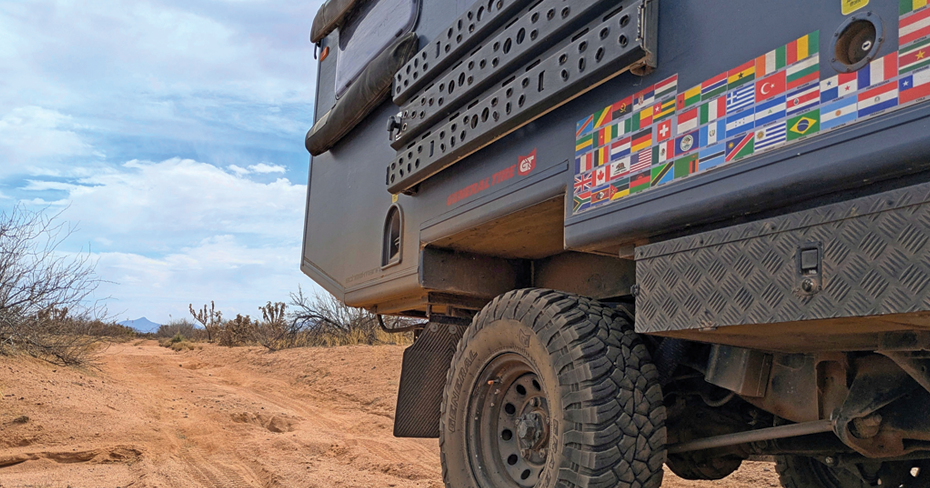
The city of Nogales has long been our preferred border crossing location as we make our way down or up from our base in central Mexico. Yes, the Baja route heading south is far more interesting and fun, but it’s too easy to get stuck in Baja for a month, as you soon convince yourself that just one more week on that isolated beach is an excellent idea. It is possible that, because many overlanders choose to head to Baja via California on their way to southern Mexico, the Coronado National Forest does not receive the attention it deserves. That, and the proximity to the volatile Mexican border, deters many, who fear run-ins with cartels and human traffickers.
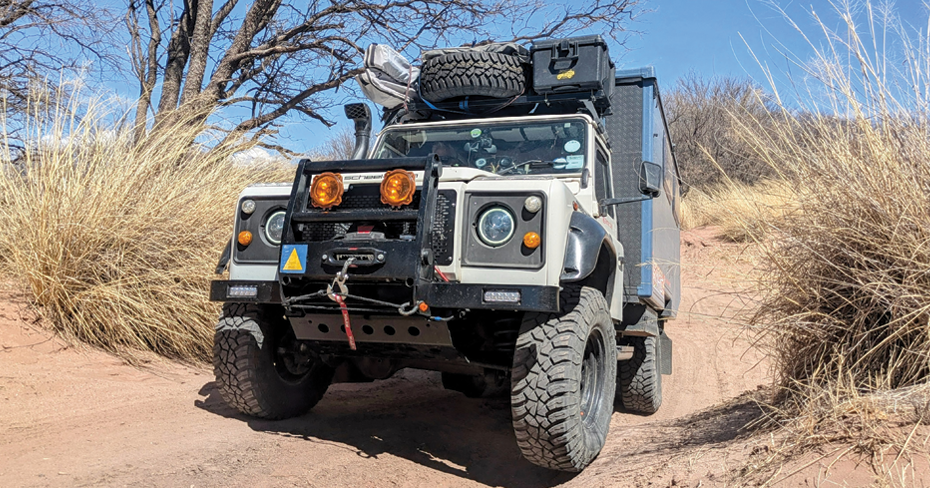
Having explored much of the US, it occurred to us that we had never explored this area, and it soon became apparent that very few others had ventured here before us. There was a distinct lack of information available, as most overlanders are drawn to the more glamorous locales offered by northern Arizona. It was time to find out for ourselves whether the Coronado had anything to offer the modern overland traveler. Truth be told, much of the Coronado does not seem all that appealing from the view of the interstate as you blast past, but we would soon learn that the Coronado is a well-kept secret—a desert paradise for overlanders seeking gentle and challenging trails, history, epic vistas, unique experiences, and sublime camping options.
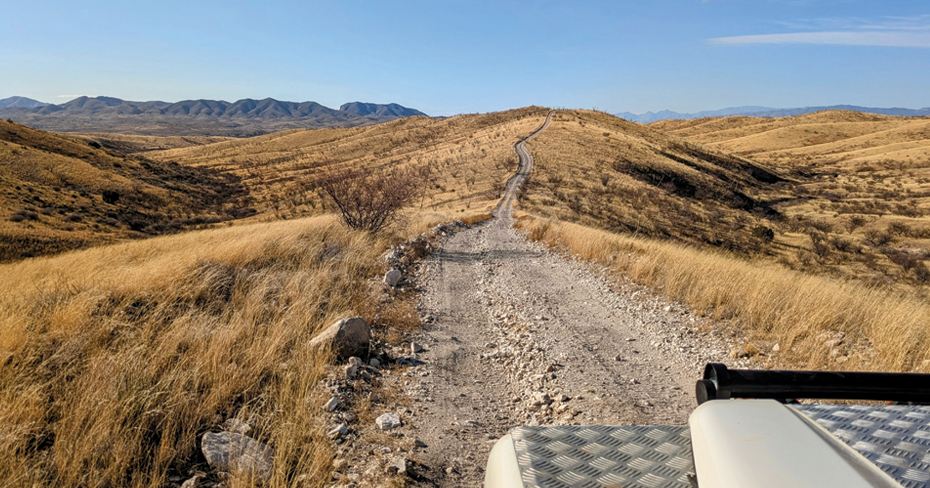
After spending a whole spring month exploring the area, we fell deeply in love with the desert and its diverse inhabitants—spiky flora and skittish fauna, mountain passes, warm days, and cool nights. Our General Tire X3s performed excellently throughout the entire month-long exploration of Coronado. These were the same tires that we had installed on the Land Rover in South Africa back in 2020, and we had explored South and East Africa before crossing the USA and Central Mexico twice. The Coronado’s sharp rocks, tortuous corrugations, and thick sand were no match for the X3s that were aired down to 25 psi to aid traction.

We entered the Coronado National Forest via the small town of Patagonia, spent the night at a dispersed campsite outside the town, and then drove up the side of a mountain in an attempt to reach the Red Mountain Lookout. We almost made it, but the steep grade and a differential lock that wouldn’t engage ultimately defeated us. It was a great introduction to the area and a reminder that an easy, semi-maintained trail can soon have you sweating, staring down a steep drop-off with the crunch of rocks beneath your tires and precious traction between yourself and tragedy. It is no exaggeration to say that the X3s might have saved our lives, and at the very least, saved our vehicle!
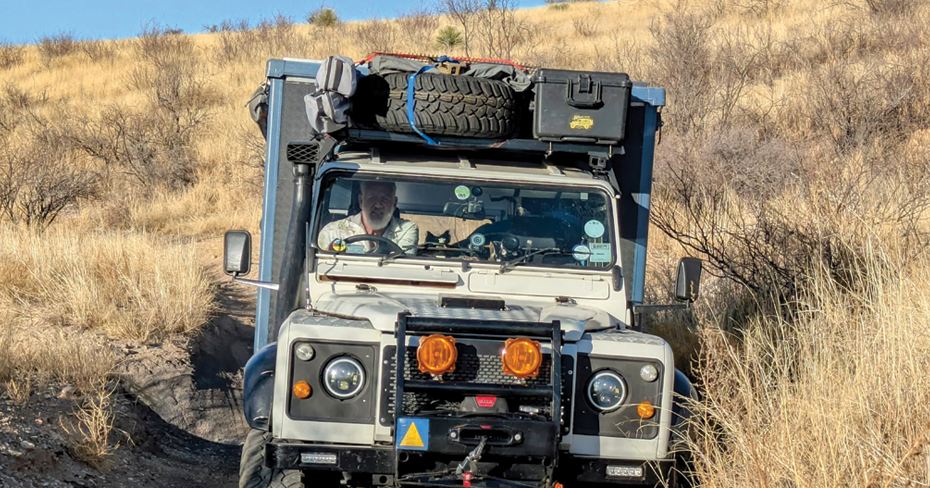
It’s best to take it easy and explore slowly, we reminded ourselves. After reversing down the mountain, slowly and white knuckled, we headed back to the main road where mining trucks zoomed from A to B. Recomposed, we set off with a plan to explore the area section by section, from east to west, south to north where a mix of maintained tracks and other more obscure trails carve between public land and ranches, the volatile border and the quaint, sun bleached towns that dot the area in quiet obscurity. We drove up the North Harshaw Road and met an ancient, toothless cowboy who rode a golden mare. He thanked us for closing the gates behind us, as this is cattle country. The second of many off-road trails gave us a taste of what awaited us over the next month. Mesquite trees clawed at the sides of the Land Rover as we dipped down an off-camber descent into a soft sand wash and clawed up the other side, tires in the air, taking turns. At the top of the climb, we came to a windswept dispersed camp offering a fire ring and a swarm of bees eager to get into the Land Rover and get a sip of our sweet iced tea.
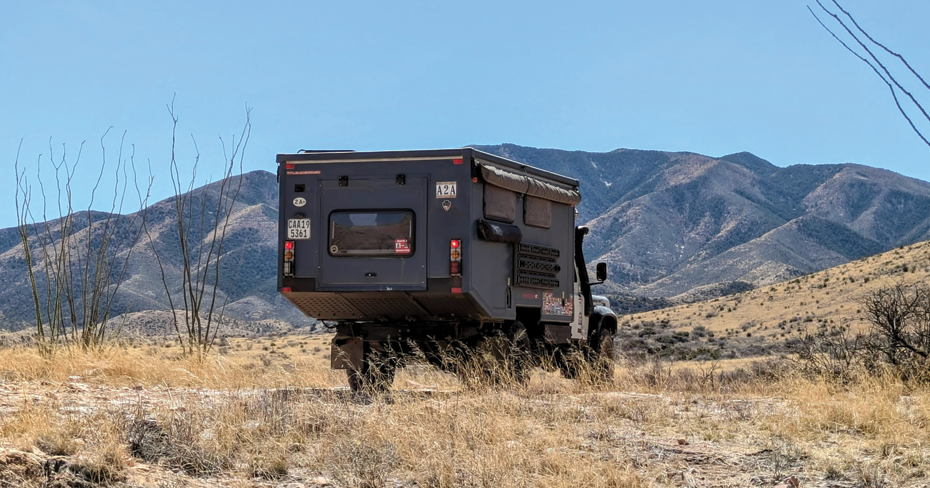
The early spring wind blew cool as we sat within the sealed, bee-besieged Land Rover and munched on our sandwiches, before us lay a valley, beyond that a tall, rusty, and maligned metal wall, and the Mexican La Calera mountains. By the time lunch was devoured, we had developed a new appreciation for this area, which has seen considerable traffic over the years, much of it controversial and much less touristy. That night, automatic gunfire rang out as we camped in a remote area down in the valley, a mile or less from the border wall and a few miles from the Kino Springs settlement. White and green border patrol vehicles are the most common users of these trails, and most seemed happy to see us.
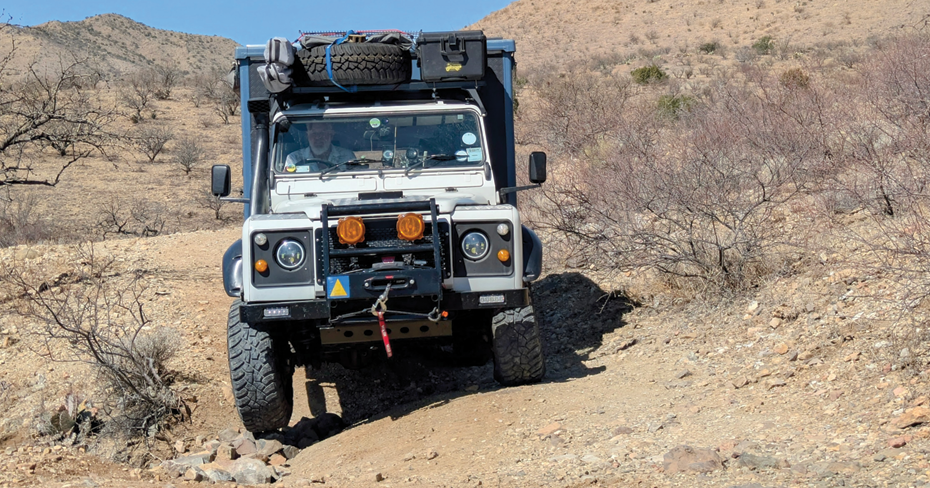
The friendly waves from the border agents increased as they became accustomed to the sight of this foreign Land Rover trundling along obscure, remote tracks, a small dog hanging out the window scanning for threats and prey. From the Patagonia area, we expanded east and explored the Bueno Vista Wildlife Refuge, which offers beautiful views, fun trails, and the opportunity to drive along the border wall and marvel at the construction of the border wall up the side of a mountain.
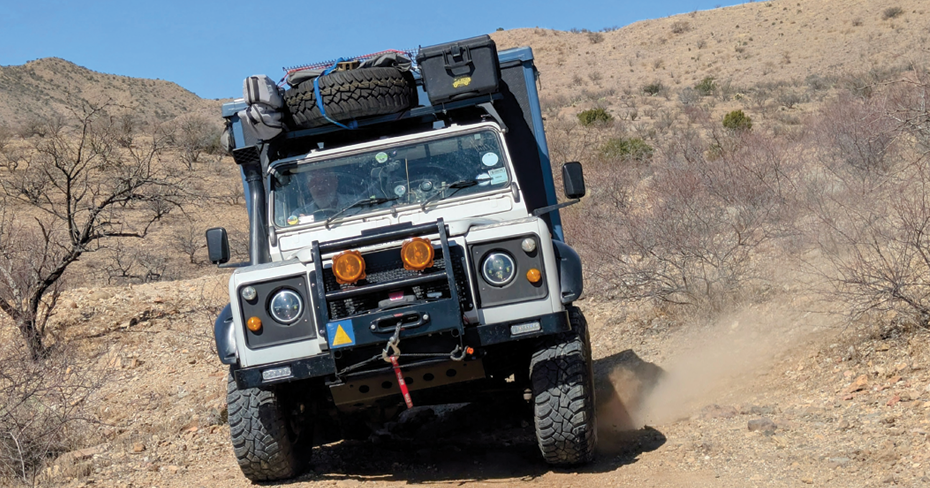
If you seek solitude, the Coronado National Forest offers that elusive serenity and space, but be aware that you are constantly being watched. Border patrol helicopters and fighter aircraft dominate the skies, and the entire border area is scrutinized. Once you get used to the idea that you are being discreetly monitored, a sense of peace of mind comes with exploring one of the most volatile National Forests in America. This region deserves appreciation and exploration.



